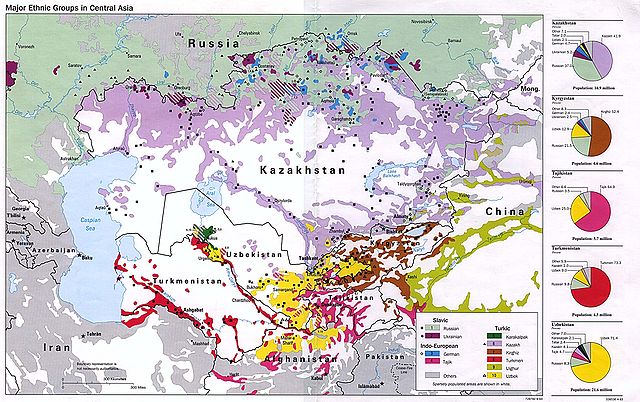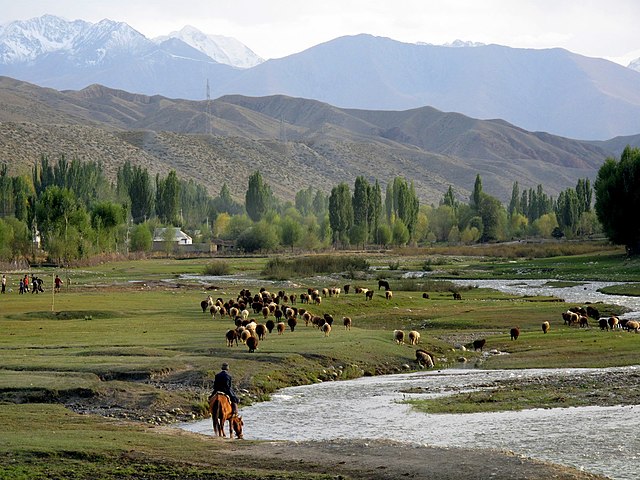Soviet Central Asia was the part of Central Asia administered by the Soviet Union between 1918 and 1991, when the Central Asian republics declared independence. It is nearly synonymous with Russian Turkestan in the Russian Empire. Soviet Central Asia went through many territorial divisions before the current borders were created in the 1920s and 1930s.
The highest peaks in the Soviet Union were located inside Central Asia. That attracted a lot of mountaineers into the area.
The Ethnic and linguistic patchwork of Soviet Central Asia
Central Asia is a subregion of Asia that stretches from the Caspian Sea in the southwest and Eastern Europe in the northwest to Western China and Mongolia in the east, and from Afghanistan and Iran in the south to Russia in the north. It includes Kazakhstan, Kyrgyzstan, Tajikistan, Turkmenistan, and Uzbekistan. The countries as a group are also colloquially referred to as the "-stans" as all have names ending with the Persian suffix "-stan" in both respective native languages and most other languages.
On the south shore of Issyk Kul lake, Issyk Kul Region
The Eurasian Steppe in Kazakhstan has a semi-arid, continental climate
Early Indo-European migrations from the Pontic steppes and across Central Asia. The Andronovo culture existed in Central Asia in the 2nd millennium BC.
The Mongol Empire at its greatest extent. The gray area is the later Timurid Empire.






